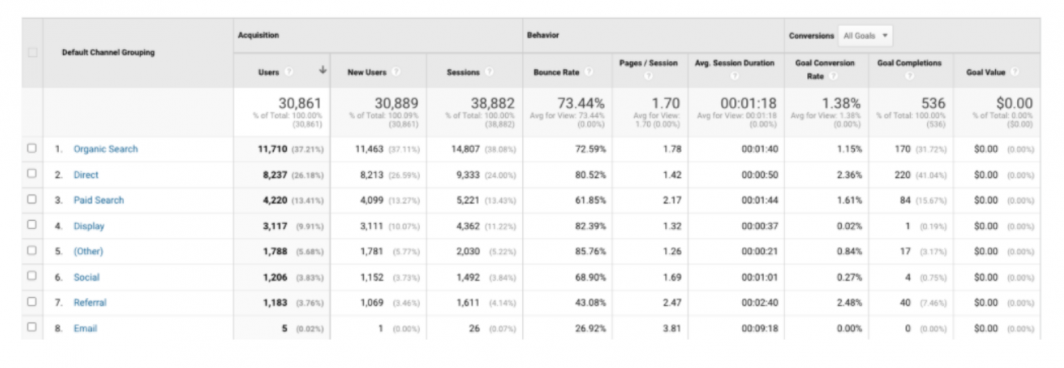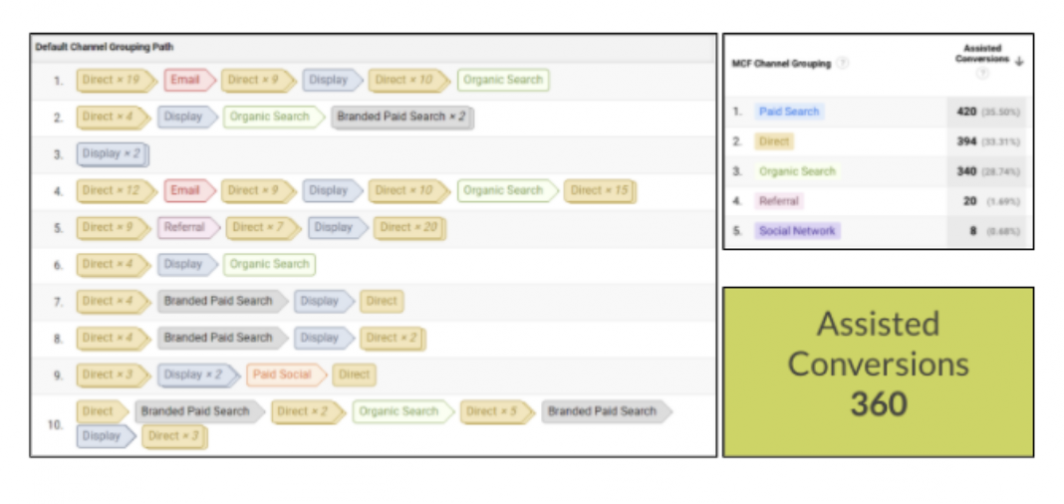Understanding Customer Journeys and Attribution Modelling
Understanding Customer Journeys and Attribution Modelling
The customer journey is an important tool to use when marketing your school. It’s a tool that defines and describes every stage of your target customer’s journey for each audience you want to reach—so you can give them the kinds of information and messages they’re looking for.
Attribution modelling may be less familiar. It looks at placing advertising at various points and channels along the customer journey to provide a cumulative effect on driving conversions.
Let’s look at both customer journeys and attribution modelling, and see how they are particularly useful in marketing strategies for private and independent schools.
The Customer Journey
Simply put, the customer journey is the path that your audiences (parents, students, grandparents, recruiters, etc.) take as they search for, learn and make decisions about your school.

The five stages of the customer journey.
Building customer journeys for each of your target audiences is the first step in setting up your marketing strategy.
Awareness is where your audiences first learn about you
Once your audience recognizes your school’s name or brand, they are in the Familiarity stage
At the Consideration stage, your audiences are thinking about your school as a possible choice for enrolment (purchase)
Conversion is the stage where your audiences take an action towards enrolment
Loyalty is a retention stage, where you want to reward those who have chosen your school—and they may in turn promote you via word of mouth and build your reputation… feeding new families into the Awareness stage of their own journey
The right message at the right time
The next step is to choose and organise the advertising channels available to you. These can include organic search, direct advertising, paid search, display advertising, social media ads, referral ads, email campaigns, traditional advertising and events—to name a few.
Identifying the best medium to carry a targeted message to your audience at each stage of their journey is both an art and a science. Our extensive experience with marketing for many private and independent schools means we’re able to help you make the best decisions for your marketing strategy, based on your unique customer data and insights.
Attribution Modelling

To understand last-click attribution, we look at acquisitions, behaviours and conversions of users by channel.
An attribution model is the rule—or set of rules—that determines how credit for an action or conversion is assigned to different marketing tactics.
The Last Interaction model assigns 100% credit to the final touchpoints (clicks) that immediately precede a sale or conversion. For an e-commerce store, there may only be one click (on a product) before the final conversion (purchase). But for schools, the path towards purchase involves many more touchpoints. This is where assisted conversions come into play.
Assisted Conversions
A conversion for a private or independent school rarely results from a single interaction. It’s unlikely that a family will hear about you for the first time an immediately enrol without visiting the website, checking out your Instagram, or registering for an Open House event—it’s the accumulation of multiple interactions that is responsible for the final conversion, not just the final click. This accumulation is called assisted conversions.
To put it another way, if you were at a bar and drank six beers, it wasn’t the last beer that made you tipsy but all six combined.
When you focus your tactics on the customer’s needs—rather than on a collection of ads and popular channels—you can see the significant benefits of a journey-driven marketing strategy.

In the above campaign, users engaged in anywhere up to 8 interactions before converting.
Understanding which tactics and channels are producing the most conversions at each stage of the customer journey can help you optimise your marketing approach—filling your school’s waitlist and producing the strongest ROI for your marketing spend.
A word about conversions
It’s helpful to remember that, with school marketing campaigns, a conversion isn’t just one thing. The decision to purchase might involve contacting you for more information, signing up for your newsletter, booking a school tour or making an application.
Each of these actions is a kind of conversion towards a final purchase decision (enrollment), and each places your target customer firmly in your sales funnel so you can market to them directly, whether through a phone call, an email campaign, an in-person tour or a conversation with Admissions.
It takes multiple touchpoints, channels and interactions to drive conversions in a marketing strategy for a school. By placing advertising strategically along the customer journey, your ads can reach the right people at the right time as they make decisions about choosing your school. Once you see how various marketing channels work together to move your audiences towards conversions, you’ve understood attribution modelling.
At Metric, we excel in helping schools evaluate and plan marketing strategies more accurately and successfully using attribution modelling. Read more about the benefits of working with an education marketing company.





